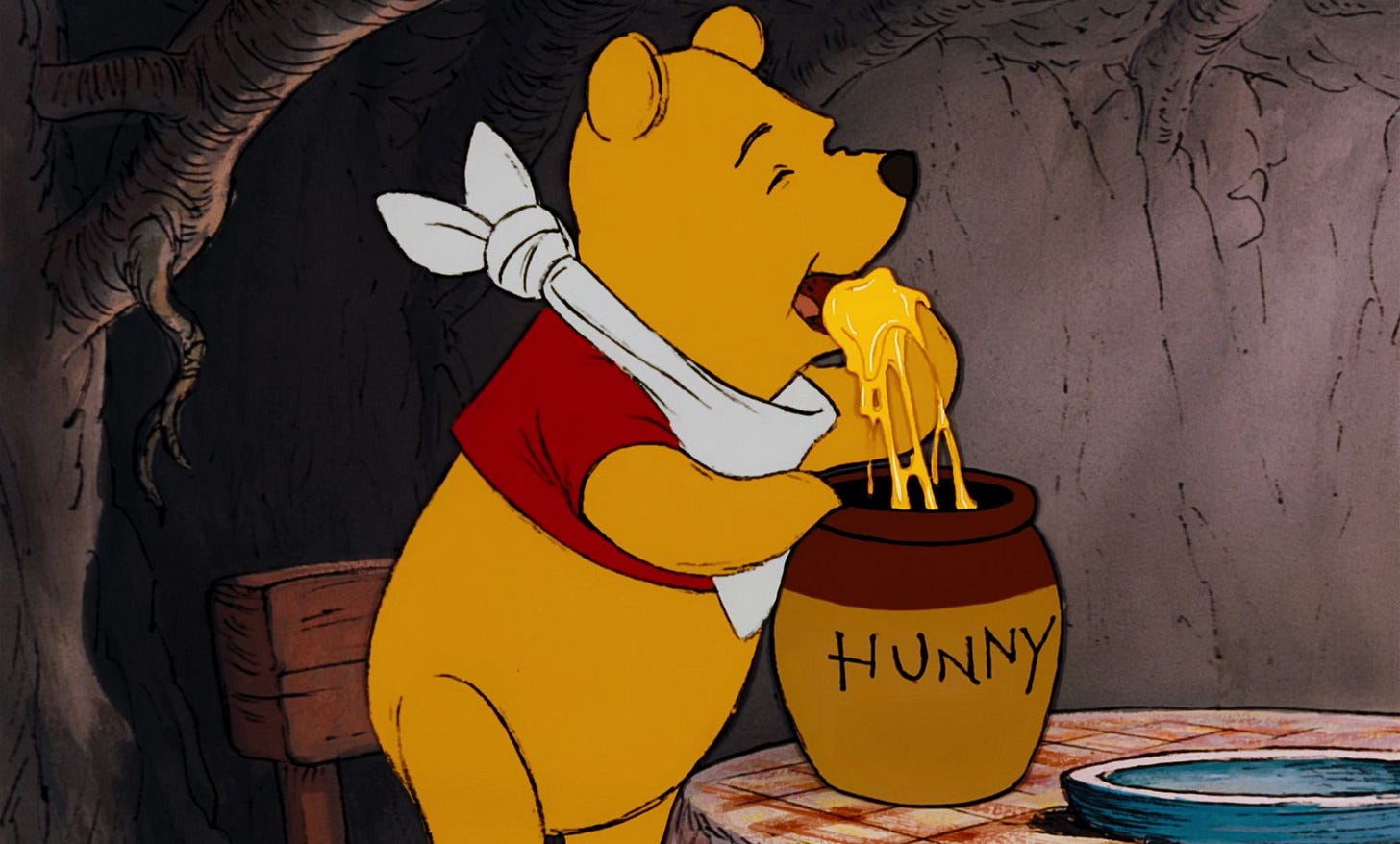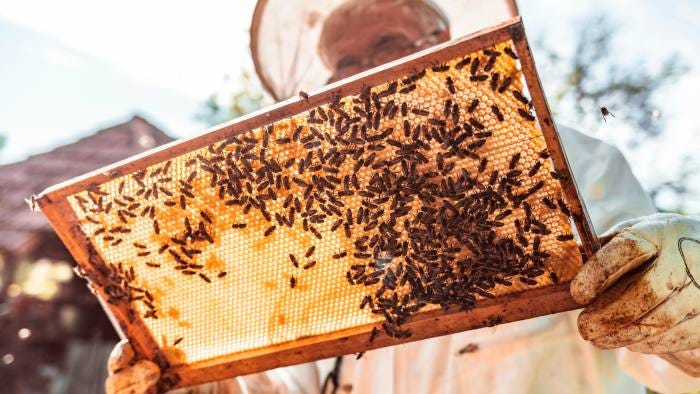Have you ever wondered why Winnie the Pooh goes off-the-rails when it comes to honey?
The legendary cartoon character is a bear with a sophisticated palate, a connoisseur of delights. Honey is basically edible liquid gold to him, and its golden hue is the key to his heart (and his growling tummy). Perhaps it's the way honey cascades (slowly) over his taste buds. Or maybe it's the magical dance of flavors from floral hints to subtle notes of sweetness.
Whatever the reason, Winnie the Pooh's love for honey is as pure as the honey itself, and his dedication to its pursuit is an inspiration to us all - myself included. After all, it’s from Winnie the Pooh that I learned from a young age to eat honey (shamelessly) out of the jar.
And so, in honoring Pooh and his life’s passion, it’s important to shed light on some ‘sticky’ business…
To all honey lovers out there: you may be unwittingly consuming a sticky substance that is not pure honey. Yes, you heard that right. ‘Honey laundering’ is a real thing, and it's not just about illegal activities. Some honey producers are mixing their products with sugar and syrup to cut costs and flood the market.
Here's how to navigate this situation.
‘Sugar… not Honey Honey’ 🎶
Let's start with the basics.
Pure honey is made by bees from the nectar of flowers, which they collect and store in their hives. It's a natural sweetener that has been used for thousands of years, and it's packed with nutrients and antioxidants.
But some honey producers are trying to stretch their supply by adding sugar or syrup to the mix. This is often done by heating the honey to high temperatures, which destroys the natural enzymes and alters the flavor.
The result is a sweeter, thinner, and less nutritious product that can be passed off as honey.
Syrup, Look, There it Is
Why is this a problem?
For one thing, ingesting sugar syrup is worse for you than natural honey. Sugar syrup is a highly processed and refined product that can cause spikes in blood sugar levels, leading to obesity, diabetes, and other health problems.
Natural honey, on the other hand, has a lower glycemic index, which means it releases its sugars more slowly into the bloodstream, providing sustained energy and reducing the risk of insulin resistance.
A Chinese-Ukrainian Syndrome
I am not another ‘let’s blame China’ guy, so please hear me out on this one.
Another issue is the origin of the honey. China is the world's largest producer and exporter of honey, but it's also known for using harmful additives in its product. Chinese producers are sneaking in cheaper honey into blended mixes to compete on price with European producers. This not only undercuts the market but can also put consumer health at risk.
What would a label say?
Well they won’t be clear. Most of the time you’d be seeing something along the lines “blend of EU and non-EU honey”.
Why is this important?
Because EU countries are pushing back against an influx of syrup-laced honey from China and other exporters that is flooding the bloc’s multi-$billion (or technically, Euro) market and driving down prices. A European Commission study found a surge in fraud: yes fraud!
Almost half of the honeys surveyed broke EU rules, with ingredients such as sugar syrups, colorings and water, according to findings. “It’s basically sugar water,” said one EU official.
Here are the details:
“The commission study, conducted from 2021 to 2022, found that 46 per cent of honey samples surveyed broke EU rules, a figure that had risen from just 14 per cent in the period between 2015 and 2017. Some 70 of 123 companies assessed had exported honey suspected of containing sugar syrups, which can be made more cheaply than the genuine article.
Of those exporters, 21 came from China, more than any other country, followed by Ukraine.”
Don’t believe me? Check out this neat piece of reporting by the Financial Times:
Honey, Don't Do That
So, what can we do as consumers?
First of all, read the label. Look for honey that is labeled "100% pure" or "raw," which means it has not been heated or filtered. Also, check the country of origin and the source of the honey. Buy from local beekeepers or trusted brands that have a good reputation for quality and transparency.
Pic: 100% organic raw honey from Casa Tua Cucina, Anna clearly knows the key to my heart.
And finally, taste the honey (if you can). Real honey has a complex flavor profile that varies depending on the type of flower nectar the bees collected.
Honey, I'm Home!
I couldn’t resist concluding with this one!
Honey laundering is a sticky issue that can have serious consequences for our health, the environment and our agricultural workforce. With a little bit of knowledge and a keen eye, we can make sure we're getting the real deal.
So, next time you're in the supermarket, don't get deep faked. Take the time to read the label and support the beekeepers who are producing this incredible product.
Bring out the Pooh in you. 🍯 🐻
Until next time!
Jean





